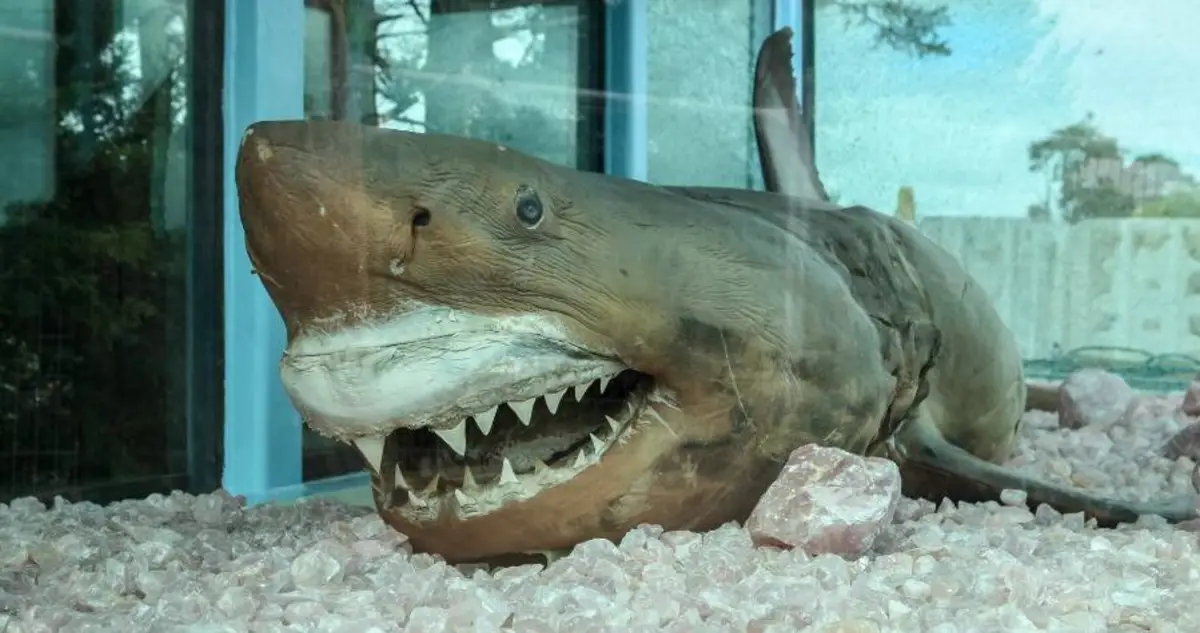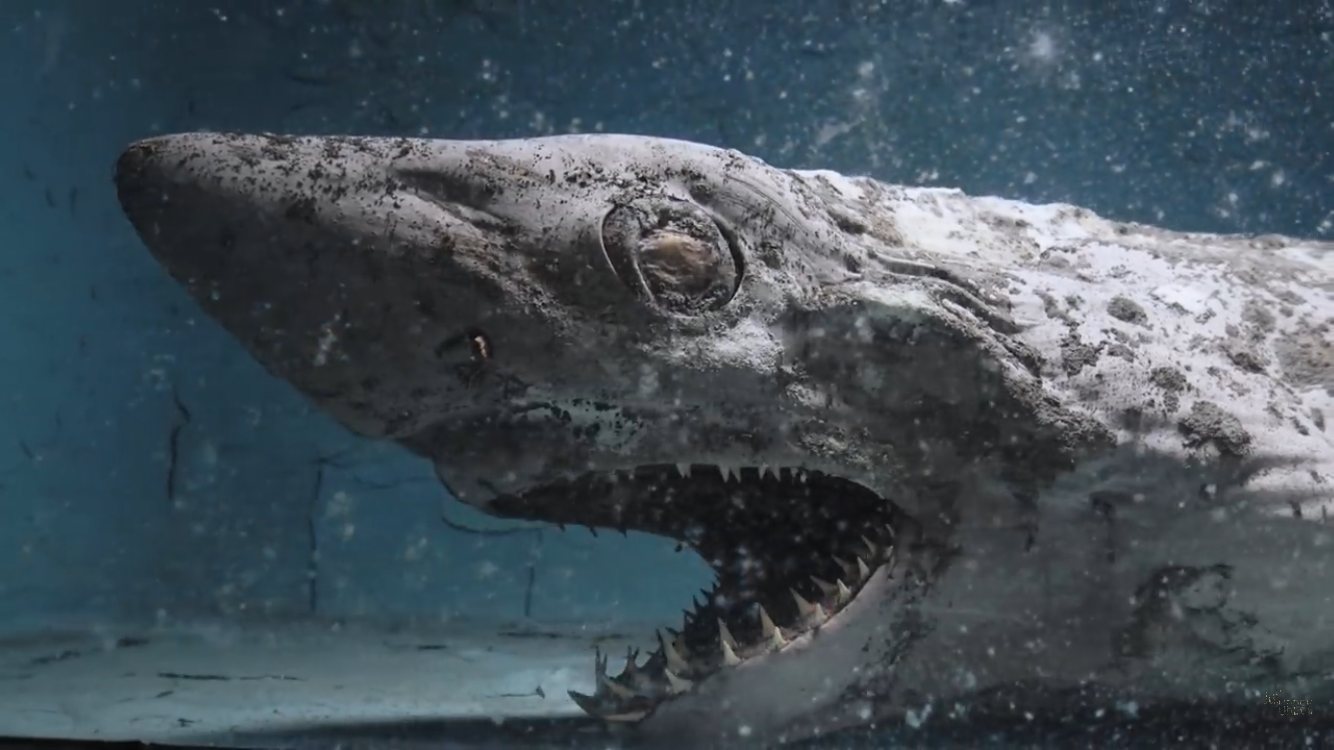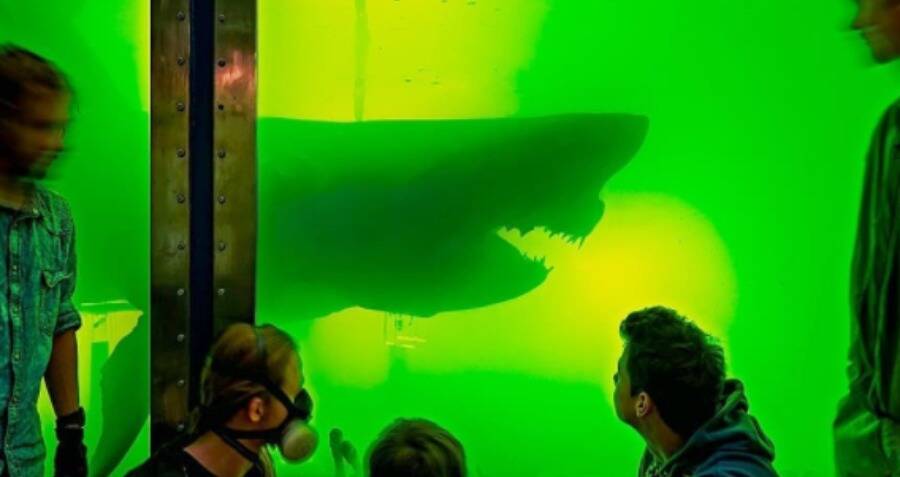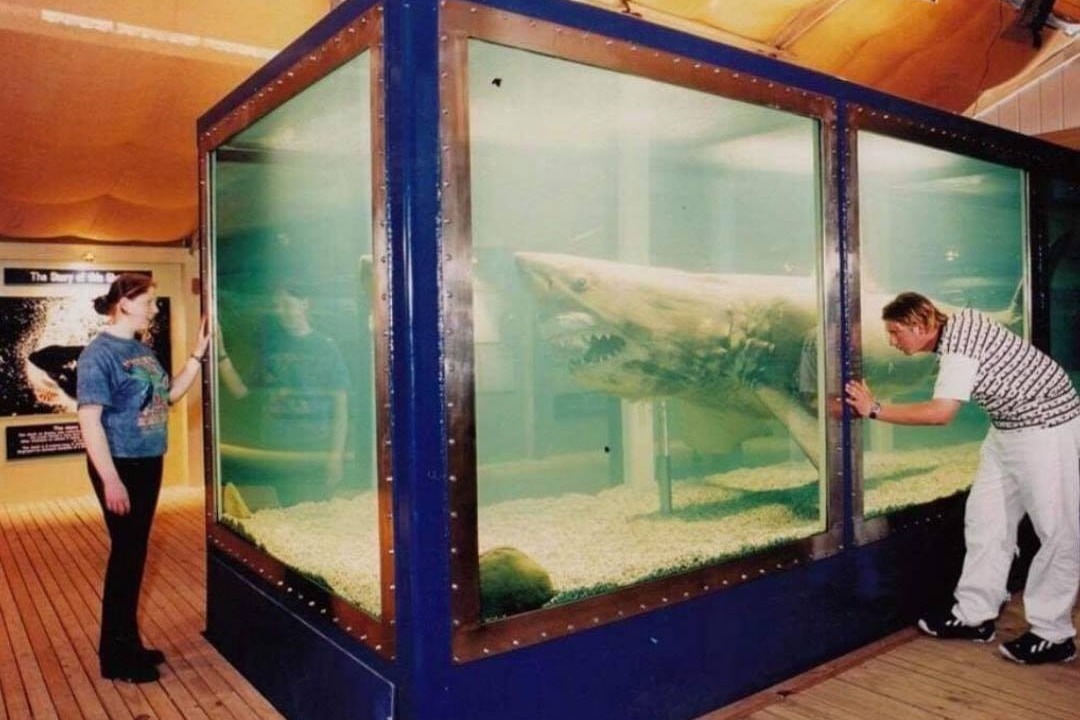3Rosie, the Shark story dates back to 1997. A shark was caught in a family’s tuna-fishing net. Unfortunately, she succumbed to death. Even after her death, she had to go through a turmoil. She was abandoned, and her tank was vandalized. Now she is being brought back to her former grandeur.
Here is to learn everything about Rosie, the shark, and what happened to her.
Who was Rosie, the Shark?
Rosie, the shark, was a great white shark caught off the coast of South Australia in 1997. She weighed two tons and had razor-sharp teeth. Wondering why she is so important? If she was alive, her appearance would be marveled at for decades. Even after her, Rosie became popular throughout the world. She remains stranded in an amusement park.
What Exactly Happened to Rosie, the Shark?
In 1997, the Lukin family from Australia caught Rosie, the shark, in their fishing net during a family tuna fishing trip. The family did not want to catch her deliberately. After this news began to spread, different people and organizations competed for possession of her body as it had a scientific value. Wildlife Wonderland purchased Rosie from the Lukin Family.
When She Was Still Alive
When Rosie was first encountered by the Australians after she had bitten her way through a tuna pen off Louth Bay, she was still alive. The local divers and seafood companies relied on those water, and any encounter with Rosie would have threatened their life. Thus, the regional government decided to hunt it down. The first step in their plan included tranquilizing her. However, the species was not actively protected during that time.
They decided to store her in a freezer in Tulka after her death. Soon the giant predator became the center of attraction, and everyone wanted to see her. She was even put on display so that many people could come and look at her.
All the animal parks started showing great interest in Rosie’s body. They wanted to buy her to increase tourism within their respective properties. Rosie was loaded into a refrigerated truck, and her 900-mile journey from South Australia to Victoria, Bass began.
But before the body of the shark arrived, the government impounded her. There were reports that a local swimmer had gone missing, which turned all the eyes of suspicion to Rosie. As a result, poor Rosie had to go through a gruesome necropsy. It was confirmed that she did not kill the woman when her stomach was found empty. She was then taken over by John Matthews, founder of Wildlife Wonderland.
Rosie was transported to Wildlife Wonderland.
The body of the shark was filled with Dacron. This material is used to keep the body in shape. It acts as a substitute for the natural body tissues of a shark. Rosie was then preserved in a custom-designed tank full of Dacron and formaldehyde and shipped to her new home.
But do you know it was not the final resting place of the shark?
In 2012, Wildlife Wonderland was shut because of allegations of operating without proper licensing. The organizations ordered the wildlife park to surrender all the live animals to the Department of Sustainability and Environment, Victoria or RSPCA, Australia. Rosie was not a live animal at that time. Thus, she was left to decay in the wildlife park.
Rosie became an Internet Sensation
In 2018, Luke McPherson, an urban explorer, found Rosie. He shared a YouTube video about his visit to the Wildlife Wonderland. The video featured the shark, and it received a whopping eleven million views. Although McPherson was respectful towards the dead in her exhibit, not everyone followed the explorer’s example.
The success of this video also attracted many criminals to the park. Consequently, they visited there and shattered the outer covering of its two panels, and threw trash into the tank. The poor dead shark was trapped, and her liquid body began to drain as the tank’s lid was lifted. It also exposed the tip of one of her fins. The garbage thrown inside the tank damaged her whole body.
Local police also issued public warnings of the dangers of visiting the shark, following the damage done by the intruders. It led the carcinogenic formaldehyde vapors to leak from the tank.
It came to the realization of the landlord that she needed to find a new home or be destroyed at that time. Such condition of Rosie also gave the rise to many movements in support of the shark, including ‘Save Rosie the Shark.’
Restoration of the Tank to save Rosie
The restoration efforts to save Rosie were directed by Tom Kapitany at the Crystal World Exhibition Center at 13 Olive Road, Devon Meadows, Victoria, Australia.
Initially, upon Rosie’s ownership, Kapitany sought advice from a shark and taxidermy expert. He stated, “At the beginning, we consulted a shark and taxidermy expert about the best way to preserve her, and there was no easy way to do it. Everything had a compromise and a problem”. He added, upon advice from glass experts regarding the smashed glass panels around the enclosure, “There are four layers of glass and just one layer is broken, so we’re keeping it because it’s all part of the story”.
The staff of the exhibition center flushed the formaldehyde out of the enclosure and replaced it with glycerol to provide a safer alternative for the preservation solution.
Many delays took place during the restoration as the cost involved in the whole project was very high. The authorities needed 19,500 liters of glycerol which cost them AUD 60,000. In the end, everything was restored.
Rosie will have a Documentary
Currently, a documentary is being filmed on Rosie the Shark by Flying Fox Productions. It follows the shark’s history, her destruction, rescue, and restoration.
Rosie rests safely from vandalism in her new home. The entire journey of this creature, even after her death, has been heart-breaking. We hope she rests here peacefully. Meanwhile, the experts are repeatedly working to replace her tank and provide her better alternative where Rosie can rest in peace.
Keep in touch for more on the events around the world.




